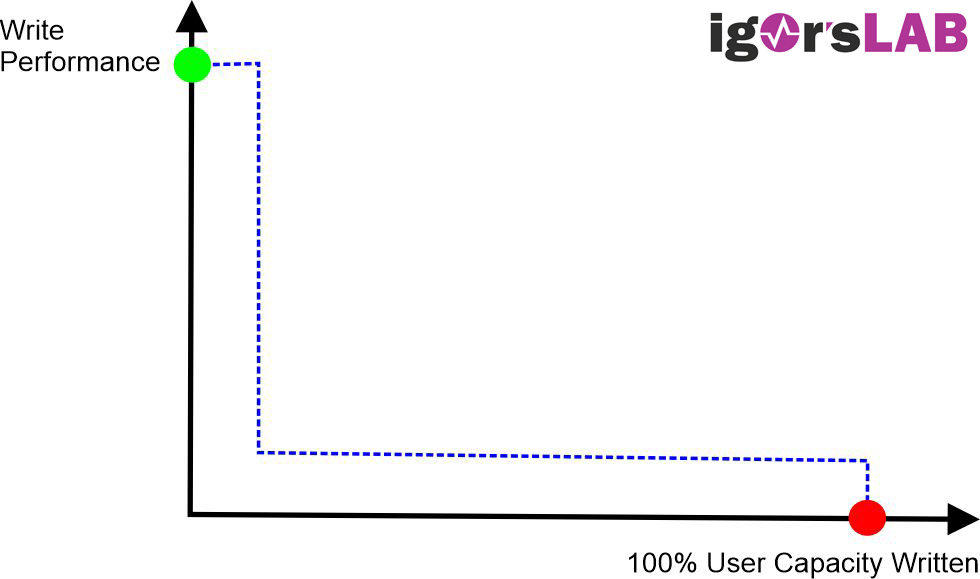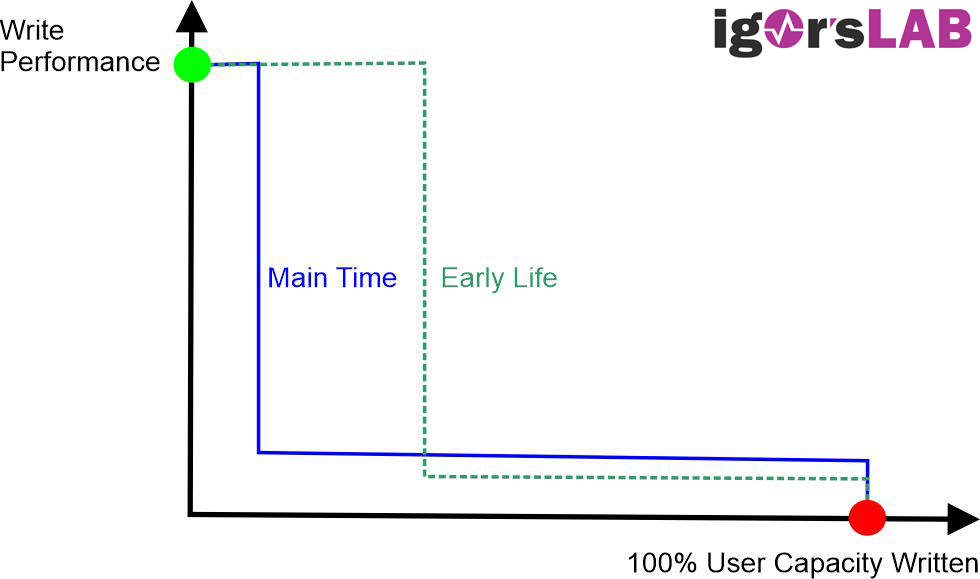Power consumption and temperatures
I had already written that the SSDs can almost be used without cooling. In idle mode, it is around 700 mW that I can measure at the adapter. In normal mode (workstation workloads, gaming), the entire SSD does not allow 2.5 watts, which is an absolute top value for a PCIe-4 SSD. The maximum of 4.43 watts in peak (typically 3.8 to 4 watts) during continuous copying is also nothing to be afraid of. Thermal throttling is supposed to start at around 90 °C, but I could not even come close to that even without a cooler. Further heating was stopped at around 68 °C in the stress test and normally it is not 45 °C in gaming. Just by a simple cooling on the back, the temperature drops by up to 9 degrees.
Controller and NAND memory
Biwin relies on a MAP1602A from Maxio as the controller. This is a spin-off of JMicron, which had also produced various SSD controllers at that time. This highly interesting controller already relies on TSMC’s 12 nm node and an ARM Cortex R5 core including co-processors. It has four channels and is completely DRAM-free, which ultimately also contributes to increased efficiency. In contrast to other DRAM-less PCIe 4.0 controllers, like the one on the Corsair MP600 GS I tested the other day, this one has a 2400 MT/s bus, which should also be good for efficiency and may well annoy Phison.
Not much is known about the controller, but it supports both Trim and S.M.A.R.T. Like other controllers, it uses Active State Power Management (ASPM), Autonomous Power State Transition (APST) and L1.2 ultra-low power state. Thermal throttling is implemented, but is of no further concern since the controller does not get too hot in most applications. This can also be seen in the fact that, unlike many other models, you can do without an integrated nickel heat sink. Unfortunately, you can’t get much more data, because the public accessibility of the information is already very limited.
I already wrote it several times that the SSD has to do without a dedicated DRAM cache. Instead, it accesses the computer’s normal system RAM via host memory buffers (from Windows 10). This can definitely be done, because normally even this standard NVMe feature is enough to compensate for the lack of a dedicated DRAM cache. But we’ll see what can happen sporadically with AJA streaming in a moment.
The Maxio controller communicates with the NAND via four very fast NAND flash channels with up to 2400 MTps (1600 MTps is normal) and supports capacities of up to 4 TB. Our sample contains two NAND modules on one side. This flash, binned and labeled by Biwin, is 3D TLC from YMTC. The four-layer 128 variant on my SSD is not even the latest expansion stage, but various political shenanigans probably prevent the top dogs like Micron from being dangerous with YMTC’s (even more efficient) 232-layer RAM at the moment. Only such discussions do not belong here. But it is annoying. MAGA and so…
This flash at least has the older Xtacking technology and as a newer iteration also already has a different 2×2 layer layout than the original 128 layer design. Strictly speaking, it is a well-known wafer-on-wafer technology to connect separate CMOS circuits on an inverted flash array (FlipChip). Certain other flash manufacturers place the CMOS under the memory array instead. The YMTC design also offers advantages in terms of chip density and efficiency, but is somewhat more costly to produce as a result.
What does dynamic pSLC cache actually mean?
Let’s move on to a more technical detail, which most people might not be aware of to its full extent. Much has already been written about pSLC cache, so there is no need to go through it again in detail, at most as a small refresher. Here we go…
To increase the write speed, the so-called “pseudo-SLC cache” (pSLC) is often used in consumer products, although it can now also be found in various industrial solutions. For this purpose, part of the NAND capacity is configured as SLC memory, in which only one bit per cell is stored. Accordingly, this memory can be written and read very quickly. Since it is not dedicated, i.e. not a real SLC memory, it is called pseudo SLC. Such a cache can be used for all memory types that store several bits per flash cell, i.e. three bits as here with TLC. The pSLC cache also uses a significantly higher voltage for the one bit, which provides some security and is therefore better than Fast Page.
The use of pSLC cache offers a speed advantage, especially when the storage medium does not have read or write accesses between writing larger amounts of data. These idle times are used by the storage medium to move data from the cache to the TLC area.

But everyone knows the disadvantages of the pSLC. When the fast pSLC cache is full, the speed drops significantly because further write accesses to the storage medium must first free the pSLC by moving older data from the cache to the TLC memory.
But what is hidden behind “dynamic pSLC cache”? Dynamic pSLC cache has now also found its way into industrial storage solutions, but only with very hard restrictions. In contrast to the static pSLC cache, up to 100% of the NAND flash is used dynamically as pSLC cache, depending on how full the storage medium is. The cache can thus comprise up to 1/3 of the total memory size
However, the writing speed of the storage medium depends not only on the amount of data that is written without interruption, but also on the fill level of the memory. And this is exactly what makes the write speed in the life cycle difficult to predict.

NAND flash manufacturers do not recommend dynamically changing the configuration of flash blocks as pSLC or TLC memory for reliability reasons, but in the consumer sector, where the temperature windows are not so important, people are more relaxed about it.
All manufacturers of dynamic NAND storage media media, including Micron, permanently switch back to TLC mode after a specified maximum number of program and erase cycles. Before that, the storage medium achieves the best values especially in short write processes that do not require the entire capacity. After a certain amount of use, however, the medium slows down permanently, and this should never be ignored. Phison’s E18 handles dynamically changing the configuration of flash blocks quite well, but it can’t outsmart physics either.
When you will reach the end of the great cache performance is such a thing with imponderables here. After about 75 GB in one piece, the glory was over for the time being and at a bit more than 80% of the capacity, you are only on a mediocre SATA level. In practice, this will hardly be possible, but it is better not to write in full in one piece and perhaps more than once.


































13 Antworten
Kommentar
Lade neue Kommentare
Urgestein
Veteran
Urgestein
Urgestein
1
Veteran
Urgestein
Neuling
Mitglied
Urgestein
Mitglied
Urgestein
Urgestein
Alle Kommentare lesen unter igor´sLAB Community →